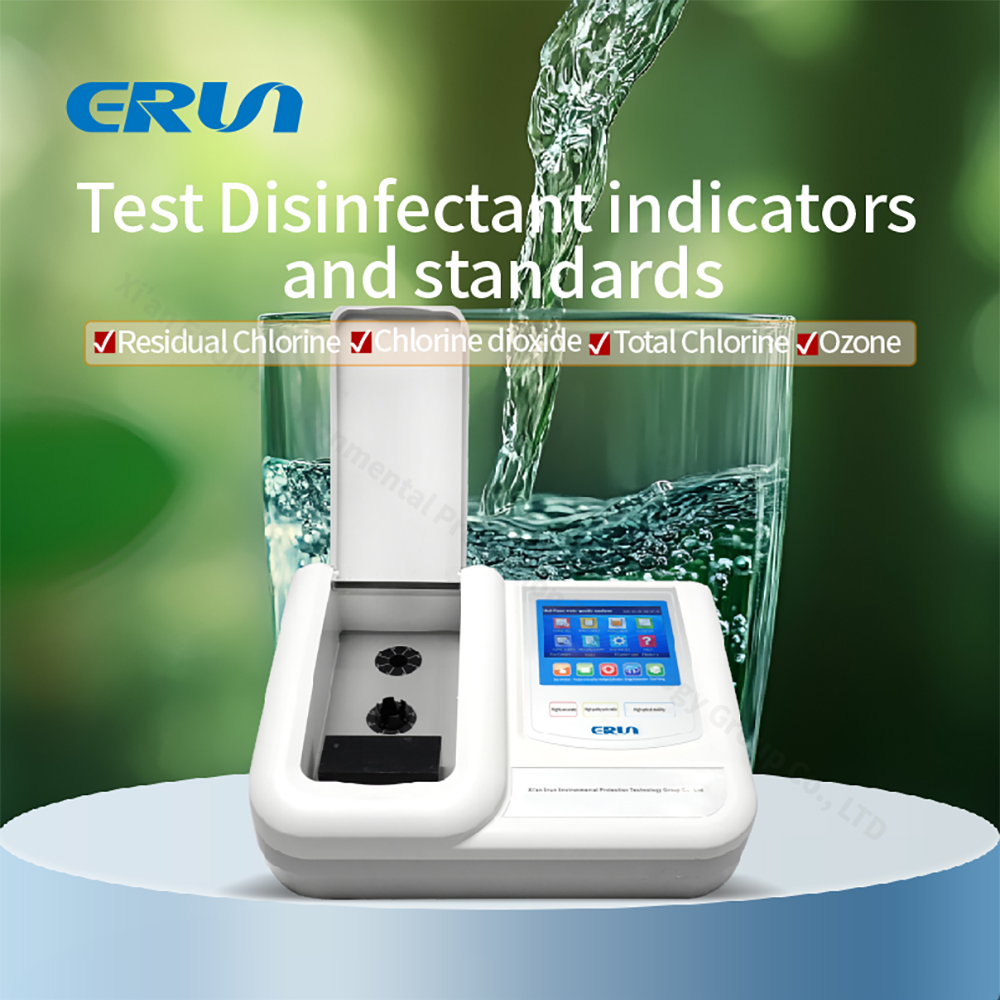As global water safety standards continue to rise, parameters like pH, turbidity, conductivity, and dissolved oxygen have become widely recognized indicators of water quality. Among them, ORP (Oxidation-Reduction Potential) has gained significant attention for its ability to evaluate disinfection performance and microbial safety. Understanding what the ORP standard for drinking water is can help water suppliers, bottling factories, and laboratories ensure that every drop of water meets strict quality requirements.
This article explains what ORP means, the accepted ORP standard for drinking water, what affects ORP levels, how to measure ORP accurately, and why advanced multi-parameter tools from ERUN are crucial for precise monitoring.
ORP, or Oxidation-Reduction Potential, is an electrochemical measurement that shows water’s ability to oxidize contaminants or reduce impurities. Expressed in millivolts (mV), ORP reflects the balance between oxidizing agents (such as chlorine or ozone) and reducing agents (such as organic matter, pollutants, or microbes).
A higher ORP reading indicates strong oxidizing properties, meaning the water can more effectively kill bacteria and neutralize microorganisms. A lower ORP reading suggests weak disinfection ability or potential contamination.
Municipal drinking water plants, bottled water manufacturers, swimming pools, and food processing facilities all rely on ORP to verify that disinfectants are working properly. ORP responds instantly to changes in water chemistry, making it a more dynamic indicator compared to traditional chlorine concentration measurements alone.
In short, ORP provides immediate insight into whether drinking water is microbiologically safe.
While ORP standards may vary by country or application, scientific research and WHO/EPA guidelines show that:
ORP above 650 mV generally indicates effective microbial inactivation
ORP between 250–400 mV suggests limited disinfection capability
ORP below 250 mV may indicate insufficient free chlorine or contamination
Thus, the commonly accepted **ORP standard for drinking water is:
≥ 650 mV
This level correlates with a strong oxidizing capacity and ensures the effective elimination of harmful microorganisms, such as E. coli, viruses, and parasites.
Bottled drinking water companies rely on ORP as a fast, reliable measure to validate each stage of water purification. ORP confirms whether ozone treatment, chlorination, or UV sterilization is performing as expected. It also ensures consistent taste, stability, and safety for consumers.
Understanding the ORP standard helps producers maintain compliance and avoid fluctuations that may compromise water quality.

Different oxidation agents—chlorine, ozone, chlorine dioxide, or hydrogen peroxide—produce different ORP values. Weak or insufficient disinfectant dosage will lower ORP.
As pH increases, ORP decreases.
Higher organic matter reduces ORP by consuming oxidants.
Temperature also alters redox reactions.
Surface water, groundwater, and bottled mineral water may show significantly different ORP behavior depending on mineral content, microbial activity, and source purity.
Handheld ORP pens or single-parameter meters are common for quick measurements, but they often suffer from:
Frequent calibration needs
Electrode drift
Inability to measure multiple related parameters (pH, conductivity, turbidity)
Since other water quality indicators influence ORP, single-parameter meters may not provide a complete analysis.
For accurate, reliable monitoring, professional water producers require instruments capable of analyzing ORP alongside other crucial water parameters.
ERUN’s advanced multi-parameter analyzers—such as the ERUN-ST series (ERUN-ST7 )—offer:
High-precision ORP measurement with rapid response
Simultaneous testing of pH, conductivity, TDS, turbidity, dissolved oxygen, temperature, and more
Intelligent algorithms for stable and consistent readings
Strong performance for drinking water plants, bottling lines, and laboratories
Compliance with international quality standards such as ISO9001 and RoHS (for certified models)
These instruments give users a complete picture of water chemistry, enabling better quality control and faster adjustment of disinfection processes.

ORP above 650 mV provides strong assurance that harmful microorganisms are effectively inactivated. Even small reductions in ORP can signal a risk of microbial breakthrough or process failure.
ORP stability indicates that purification systems—such as ozone treatment, reverse osmosis, or activated carbon—are working properly. Large fluctuations may suggest contamination, equipment malfunction, or chemical imbalance.
Many international markets require ORP records as part of drinking water safety documentation. Using professional ORP measurement devices simplifies compliance reporting and enhances brand credibility.
ERUN instruments are engineered for environments that require absolute accuracy. Their ORP sensors deliver reliable results across a wide measurement range, essential for modern water treatment operations.
Since ORP is impacted by pH, conductivity, temperature, and organic matter, ERUN’s integrated analyzers provide a more meaningful interpretation of water conditions than single-parameter tools.
ERUN analyzers support:
Drinking water plants
Bottled water factories
Wastewater treatment facilities
Environmental monitoring stations
Academic and research laboratories
Their durability and intelligent design make them ideal for long-term water quality management.
Knowing what the ORP standard for drinking water is—and understanding the factors that influence ORP—helps operators maintain safer, cleaner, and more consistent drinking water systems. A value of 650 mV or higher typically indicates effective microbial protection.
To ensure accurate ORP monitoring, advanced instruments like ERUN’s multi-parameter water quality analyzers provide precise, real-time measurements that support quality control, regulatory compliance, and consumer safety.
For more information about ERUN water quality solutions, visit erunwas.com.